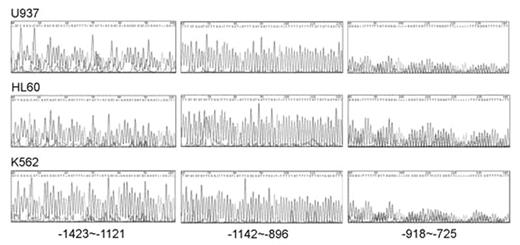Abstract
CCAAT/enhancer binding protein a (C/EBPa) is a 42-kDa transcription factor that is selectively maintained during granulocyte differentiation. Loss of tumor suppressor C/EBPa expression is seen in several human malignancies, including acute myelogenous leukemia (AML). Conditional mouse models revealed that impaired C/EBPa function contributes directly to the development of AML. Previously, we identified CEBPA mutations in 15% patients with AML and sequential study showed the mutations would disappear at complete remission but the same mutations would reappear at relapse. When only considering the AML patients with normal karyotype, CEBPA mutations were identified in up to 35% patients in AML patients. The fusion proteins generated from common chromosome translocation t(8;21), t(15;17), or inv(16) have been reported to down regulate CEBPA expression or to inhibit C/EBPa function. These studies raised the importance of the C/EBPa function, alteration of which would tip the balance from differentiation toward cancer. Since an increasing number of epigenetic deregulation were reported to be associated with AML, we hypothesized that DNA methylation of CEBPA promoter may play roles in modulating expression in AML. In this communication, we showed that C/EBPa were well expressed in HL60 cells, few expressed in U937 cells and poor expressed in K562 cells; real-time RT PCR revealed that the relative RNA expression ratio of HL60, U937, and K562 cells was 673.6, 73.2 and 0.2, respectively. Subsequent DNA sequence analysis revealed that all three cell lines had no CEBPA mutation. Further methylation analysis revealed that the repressed expression in U937 and K562 cells were associated with hypermethylation in the upstream CEBPA promoter region (Figure 1), not the core promoter region (−141 to −15 and −32 to +103). The U937 cells demonstrated methylation pattern in region upstream to CEBPA promoter (−1422 to −1142); whereas K562 cells demonstrated methylation pattern in all three upstream region (−1423 to −1121, −1142 to −896, −918 to −725). These data highlight the significance of CEBPA hypermethylation in AML. In order to evaluate the significance of CEBPA hypermethylation in patients with AML, we studied the methylation status of the CEBPA gene in the bone marrow cells from 92 adult patients with AML at diagnosis using the methylation specific PCR method. Eighteen were M1, 33 M2, 2 M3, and 21 M4. Of these AML patients, 23 (25%) had methylation pattern in region upstream to CEBPA promoter (−1423 to −1121), one further showed methylation pattern in region upstream to CEBPA promoter (−1142 to −896). These results indicate that DNA hypemethylation of upstream CEBPA promoter region, especially from −1423 to −1121, might be involved in the regulation of CEBPA expression and play an important role in AML.
Methylation pattern of upstream CEBPA promoter region was shown in U937, HL60 and K562 cells *T-C Lin and C-Y Lee contributed equally to this communication.
Methylation pattern of upstream CEBPA promoter region was shown in U937, HL60 and K562 cells *T-C Lin and C-Y Lee contributed equally to this communication.
Author notes
Disclosure: No relevant conflicts of interest to declare.


This feature is available to Subscribers Only
Sign In or Create an Account Close Modal